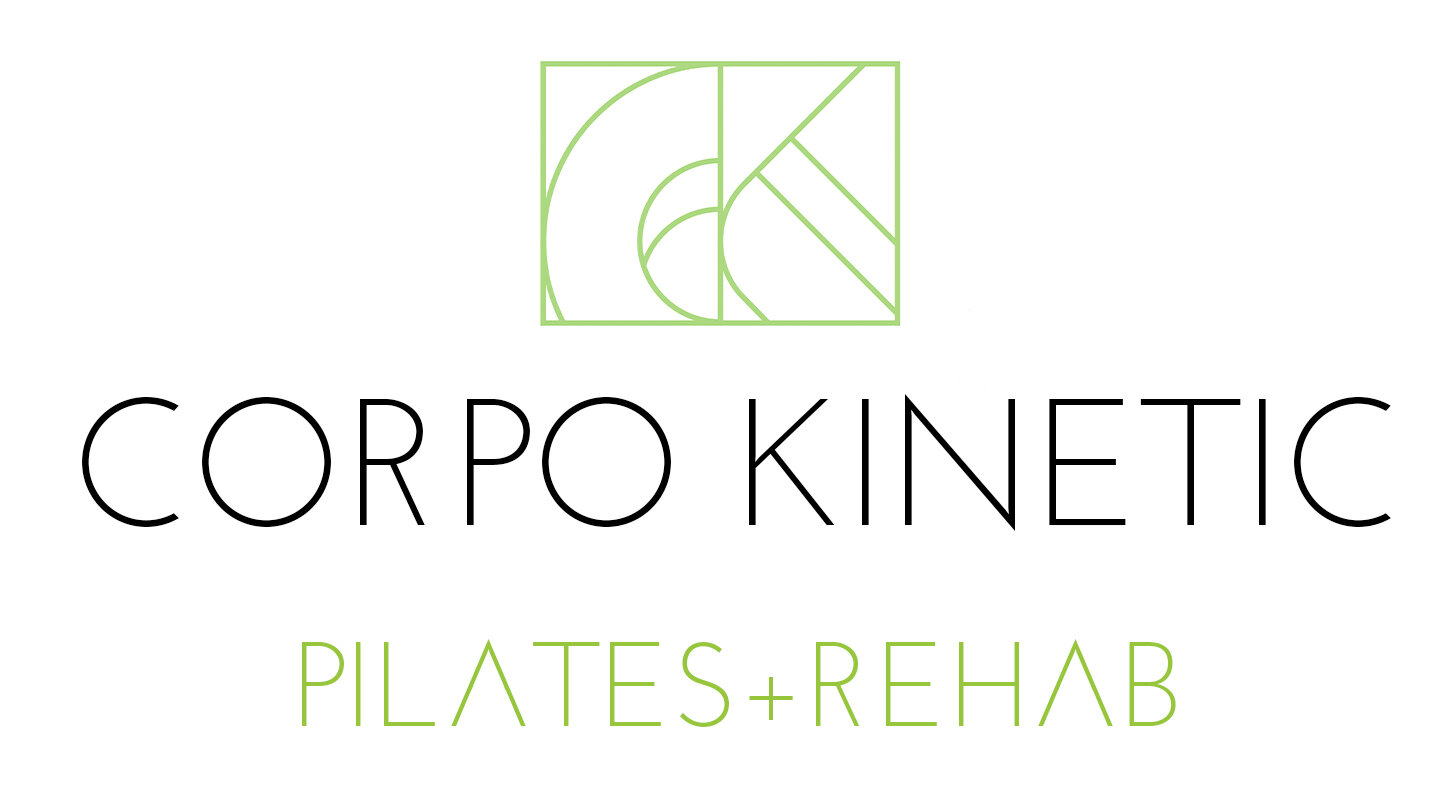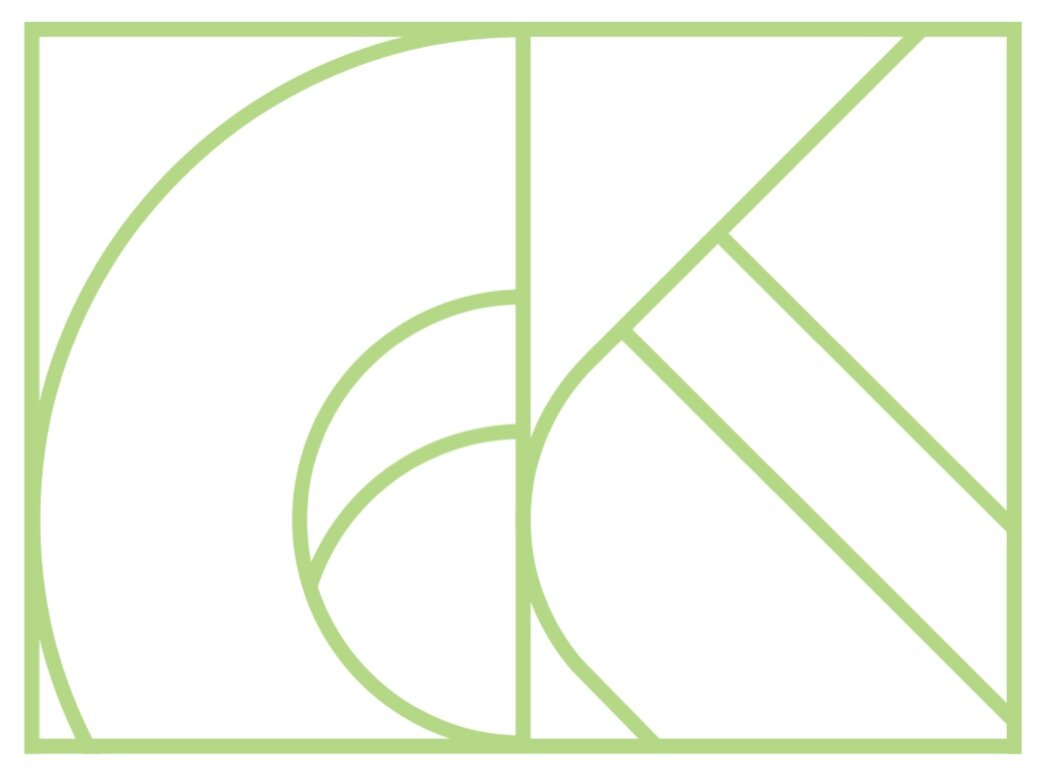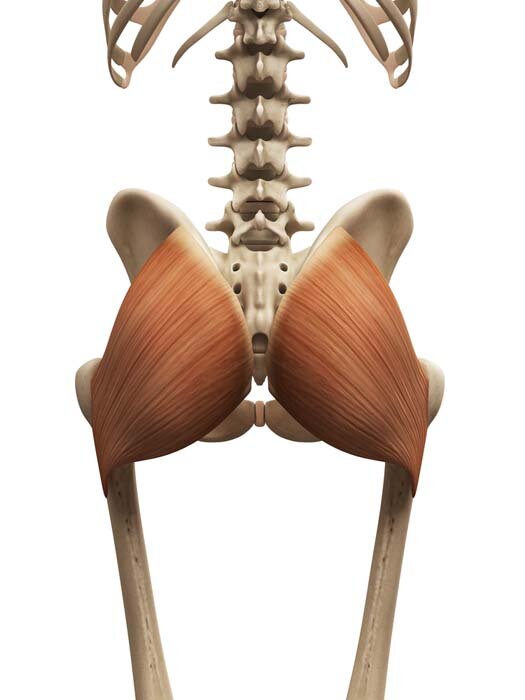Anatomy Moment: Good glutes!
Happy New Year! I may be a little late, but it’s still the start of 2018, and a time of year that many people make body-related resolutions. Goals are a great way to get motivated, so I’d like to offer a Pilates-themed one out there… what about for 2018 making a resolution to build a better butt? Teehee!
The Glute Max shown all alone – even without it’s friends, it’s very butt shaped!
Why would I care about your behind? We’re a studio who’s focus is proper function, injury prevention, and pain reduction, so you won’t see tips and tricks for making your booty look better in jeans here. However, a stronger behind will protect your back, knees, and hips – and that’s exactly what we care about. Enjoying how you look after your training has paid off is just a side benefit.
Let’s start with the anatomy: what are the glutes? “Glutes” is a catch-all term describing all of the muscles on the back half of the pelvis. While there are nine different muscles in this region (actually, 18 if you count each side separately!), the name “glutes” comes from the anatomical name for the three largest ones. Let’s start there. We have:
gluteus maximus – the largest muscle of the three, which really gives the butt its quintessential butt shape
gluteus medius – the middle sized one of the three muscles. Sometimes referred to as the “jean pocket” muscle, it is more on the sides than the exact rear
gluteus minimus – the smallest of the three, it lies below the gluteus medius and shares many of the same functions as its middle sibling
So, there’s three. I told you there were nine on each side, so we’ve got a ways to go! The other six are sometimes referred to as “the deep six.” What you can tell from this name is that:
The deep six lie below the other muscles. Deep in anatomy is further from the skin surface. A deep tissue massage is one which affects these deep muscles, as opposed to just the superficial ones close to the skin.
The deep six share a similar function – otherwise they wouldn’t be grouped together when named. Another example of a group of muscles sharing one colloquial name is “the rotator cuff” in the shoulder, which refers to a group of four muscles which support and stabilize the shoulder. Some anatomists think of the deep six as the hip’s version of the shoulder’s rotator cuff.
Just for the fun of naming them, the deep six are the:
Here’s a great example of the movement “abduction,” or bringing the legs out to the side.
piriformis
obturator internus
obturator externus
gemellus inferior
gemellus superior
quadratus femoris
I personally consider the glute region to include ALL of these muscles – both the deep six and the three muscles which actually have the work root “glute” in their name. However, functionally, they act quite differently. In general:
the deep six act with the psoas muscle on the front of the pelvis to center the thigh bone in the hip socket. They create small, precise movement which contribute to balance and stability.
the gluteus medius and minimus abduct, or move the leg out to the side. Unless you’re laying on your side doing leg lifts, doing jumping jacks, or doing some cool side kicks on the dance floor, you may not be doing straight abduction in day-to-day life. However, every step involves a moment of balance on one leg, and it is in the full gait cycle that the gluteus medius and minimus should be active to help move and stabilize the hip joint in the side-to-side plane.
the gluteus maximus extends the hip, or brings the leg behind the body. Again, we have lots of exercises in the Pilates studio which target and strengthen the gluteus maximus. However, the gluteus maximus also works in a healthy walking pattern. Every time you step forward, the gluteus maximus is essentially “pushing” the ground behind you to propel you forward. Walk up a hill, and the gluteus maximus is now pushing you up hill – a heavier load and more work!
So, from starting with nine different muscles in the region of “glutes,” we now have three different groups of glute muscles, each with a different function. If you want to build your glutes this year, you can of course come to the studio, where we have a host of different exercises to target each one, and where we can evaluate you to be sure your glutes are firing when they should be. And when you’re not at the studio, here are a few simple things to do to build yourself a better booty in 2018:
Walking is good for your glutes – walking on uneven ground is even better!
Get off your glutes. When we’re sitting, the whole region is smushed and not doing much. Stand up walk around, and get some circulation and movement down there.
Every time you get up out of a chair, you’re essentially doing half a squat. Squats are one exercise we frequently use at the studio to strengthen our clients’ glutes. As you’re getting up from your chair (and off your glutes), think about feeling your weight on your heels. Push through the heels as you stand up, rather than the toes, for more glute engagement.
Stand on one leg. Every step involves a brief moment of standing on one leg. Ideally, our gluteus medius and minimus are working at this moment to stabilize the pelvis. However, most of us don’t use these muscles much as we walk. Stand on one leg with your pelvis even and hips level, and see if you can feel the engagement on the side of your hip – around where a jean pocket would be. How long can you hold the stance? I do this when I brush my teeth. That’s a twice-daily glute workout, right?
Take walks. Remember that the gluteus maximus is responsible for “pushing the ground behind you” as you walk. Focus on that push off, as opposed to the leg swinging forward. If appropriate for your body, take your walks up some hills. Also if appropriate for you, start walking on uneven ground: beaches and hikes are great places for this. Uneven ground challenges the small stabilizing deep six muscles to make their micro-adjustments at each step, and builds better balance.
That’s it for this month! Here’s to health, happiness, and a better booty in 2018.
Let’s Move!
Book a group class or private session to use what you’ve learned:





